Once upon a time, there was a social media marketer who shared links to great content, added relevant hashtags, and ensured posts were published at the optimal times.
However, despite all he was doing right, this marketer’s posts generated little engagement.
After months of trying and failing to build and captivate an audience, the marketer ultimately decided to abandon this line of work and instead pursue a career as a mime.
He struggled at first, but he dedicated himself to his craft, and ultimately realized that what his performances lacked was the same thing his social posts needed: storytelling.
While he’d mastered movement and expression just like he’d perfected the basics of social media, his audience wasn’t engaged because he wasn’t giving them a narrative to invest in.
The truth is that stories aren’t just entertainment; they serve a much deeper purpose. And our brains can’t help but be drawn to them, regardless of whether they’re actual events or a completely fabricated tale about a marketer-turned-mime.
In fact, “breakthroughs in neuroscience reveal that our brain is hardwired to respond to story,” Lisa Cron writes in her book Wired for Story. “The pleasure we derive from a tale well told is nature’s way of seducing us into paying attention to it.”
So if you want to capture your audience’s attention on LinkedIn or Instagram, you need to understand both the art and the science of social media storytelling for your brand.
Why is Social Media Storytelling Important?
When I use the word “storytelling,” I don’t just mean a story in the traditional sense: a work of literature with a protagonist (like a marketing-minded mime) navigating a series of challenges until they ultimately solve the story problem.
Storytelling is at the heart of all great marketing, but instead of the character, you’re telling the story of your brand.
Social media storytelling involves using channels like LinkedIn, Twitter, TikTok, and Instagram to share the narrative of your brand, its people, and its products in a way that engages, entertains, or informs your audience.
The primary goal of social media storytelling isn’t to make sales, but instead to make connections.
Luckily, making connections and telling stories is exactly what our brains are primed to do.
From an evolutionary perspective, stories are quite literally lifesaving. They originated as a way to bring people together to share essential information.
As Cron explains, simply being told, “Don’t eat those berries” isn’t nearly as effective or memorable as hearing, “Don’t eat those berries unless you wanna croak like the Neanderthal next door; here’s what happened…”
Our brains crave stories because they allow us to consciously navigate information, seek meaning, and pull out what’s most important. Or, as neuroscientist Antonio Damasio puts it, storytelling is our brains’ solution to making something “stick.”
Storytelling is a Key Component of Marketing
What’s this got to do with social media marketing? Everything.
A well-crafted brand narrative told via LinkedIn, Twitter, or any other social channel does the following:
- Taps into our emotions, activating various parts of the brain
- Stays with us since story taps into memory
- Influences our behavior
No wonder social media storytelling is such a powerful marketing tool.
“You can teach people data and concepts, but it’s the stories that people are going to remember,” says Mita Mallick, head of inclusion, equity, and impact at Carta, who was voted a Top LinkedIn Voice in 2020. “When you share a story and something hits a chord and resonates, people are more likely going to remember what you were trying to teach them or the point you were going to land.”
Effective marketers know how to harness the power of social media storytelling and share engaging stories that grow brand awareness, increase reach, and build trust.
These things certainly impact sales, but again, the goal of social media storytelling is all about engagement and connection. So let’s take a look at some tips to help you communicate your brand in a way that’ll captivate your audience.
Social Media Storytelling Tips
Let these strategies and expert examples guide your brand’s social media storytelling.
1. Know your brand.
Before you can effectively engage in social media storytelling, you first need to understand your brand, what it has to offer, how it differs from competitors, and what your audience thinks of it.
“You have to really think about your unique value proposition,” Malik says. “Why do you have this product and service? How is it surprising, delighting, or enhancing the quality of someone’s life? Really hone in on that and why it’s so important.”
Armed with this information, you’ll know what you need to communicate about your brand and highlight about your products or services in your social posts.
2. Understand your audience.
In addition to knowing your brand, you also need to have a deep understanding of your audience that consumes your social media content.
If you don’t already have detailed customer personas, now’s the time to create them.
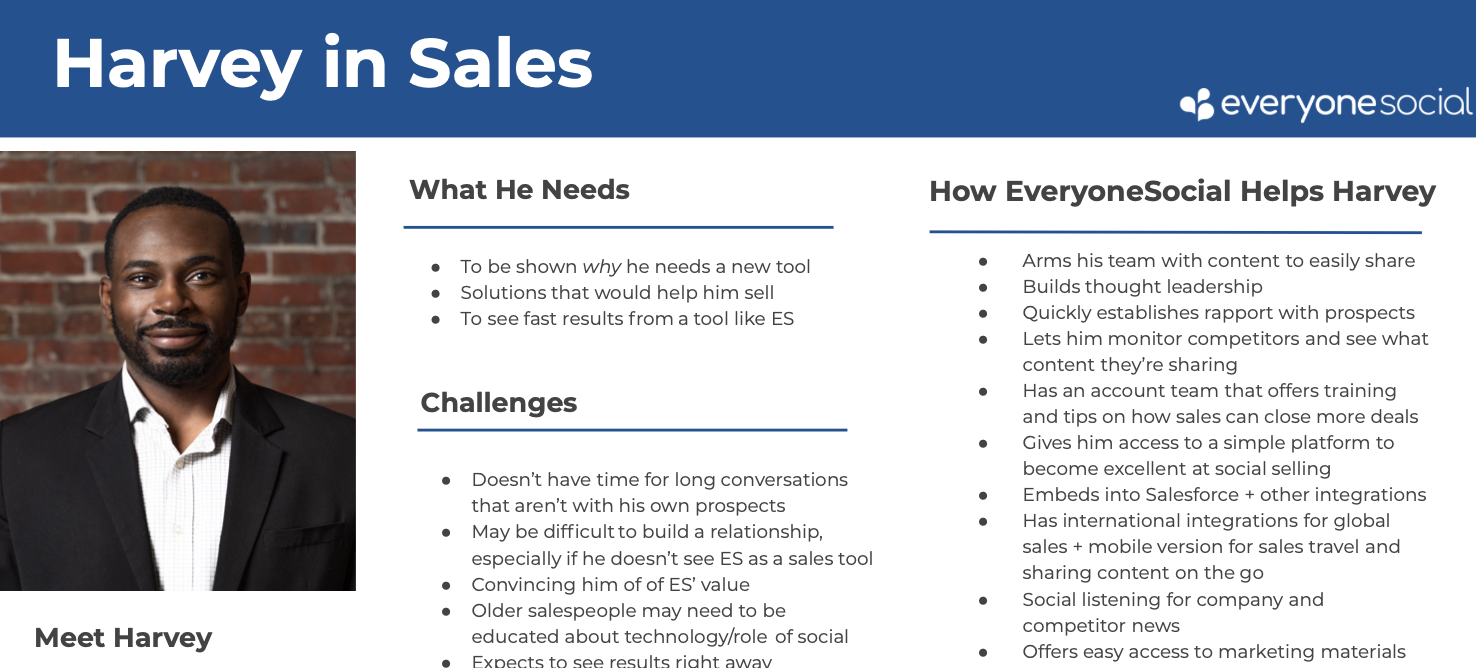
Here at EveryoneSocial, we target a variety of different personas (our pal Harvey is just one of them), and we keep them — and their needs and pain points — front of mind when we create content for them.
In addition to what you already know about your ideal customers, you can also use individual platform analytics for Instagram, LinkedIn, and other social networks where your brand has a presence to learn more about the people engaging with your content.
Once you know who your audience is, you’ll be able to identify ways to capture their attention through social media storytelling.
3. Use a variety of storytelling formats.
Different social media platforms lend themselves to certain types of storytelling. Instagram and TikTok, for example, rely on visuals, while LinkedIn and Facebook are better fits for longer text-based posts.
Your brand no doubt has a presence on various social channels, so experiment with ways to tell its story through text, video, GIFs, and more.
Here at EveryoneSocial, we know we have great blog content (there’s a reason why you read this far!), but no matter how awesome our content is, we understand that not everyone is going to click a blog link we post on social media.
That’s why we give our followers a variety of ways to consume our content through social media storytelling.
For example, we may create tweet threads that highlight the main concepts of a blog.
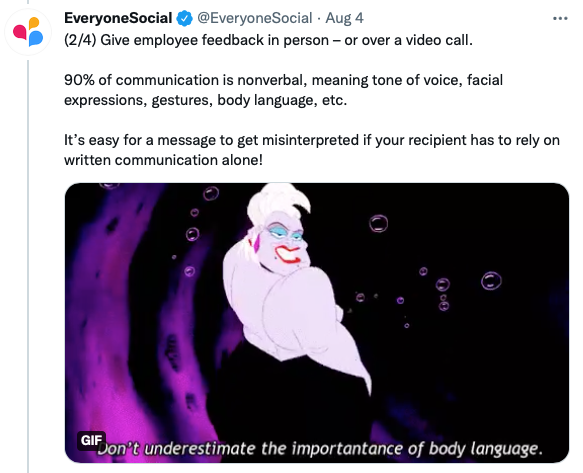
Or our CEO will film a short video for LinkedIn to share his take on an important topic.
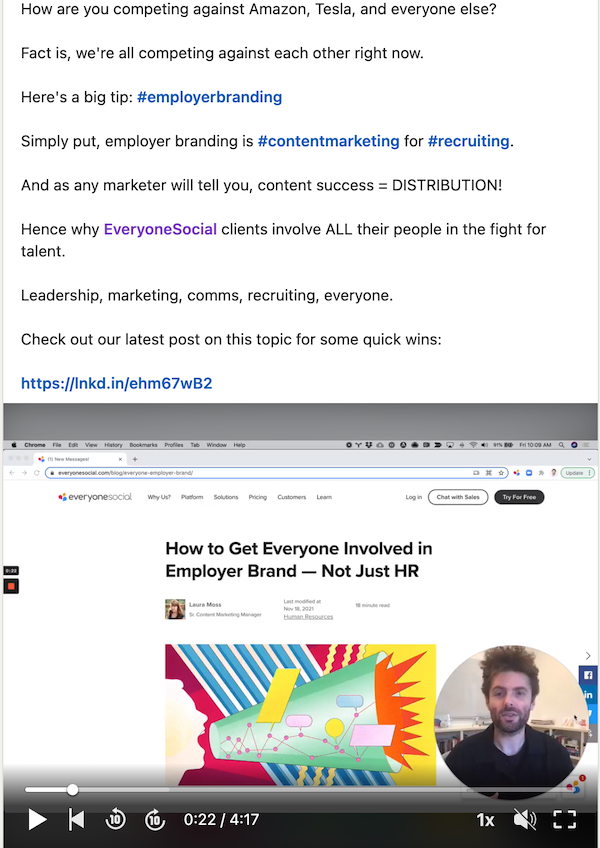
Keep in mind that you want to consistently communicate your brand message; however, you don’t want to post the exact same thing on every social media outlet.
As noted above, some storytelling mediums just work better on certain platforms. Plus, you want to give your audience a reason to follow you across various channels. If you post the exact same thing on Facebook as you do on LinkedIn, why would a user follow you on both?
4. Share memorable moments.
Studies show that memories connected to emotions are stronger, so take advantage of this.
Identify those moments that are particularly memorable for your brand and share those stories on social media.
“Stickiness makes your brand story memorable. Experiences that are shocking, heartwarming, relatable, or unusual help people not only remember your story, but also prompts them to share it with other people,” says documentary filmmaker Jia Wertz.
Look at the evolution of your brand and find moments that will tap into people’s emotions.
Why? Because people don’t make decisions based on data alone. Research shows that emotions are a necessary component, which is why storytelling should be an integral part of communicating your brand.
If you need ideas of what to share, dig into the inspiration behind your brand, the story of your first customer, a challenge the company faced, a time the CEO failed and what they learned from that experience, how and why your organization supports a particular cause, and more.
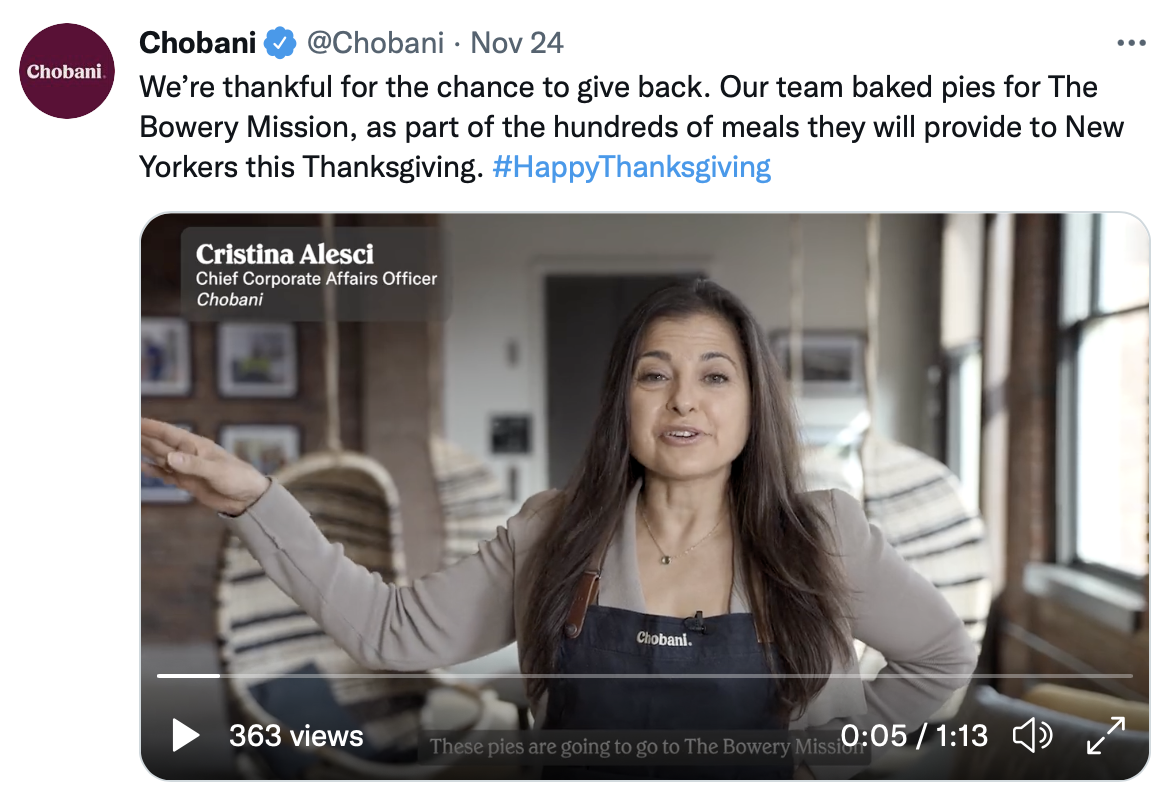
Not sure where to start? Interview leadership or survey employees for ideas.
5. Focus on points of change.
Our brains are hardwired to detect change, so make a post about a moment of change or set up your post to immediately capture a user’s attention by teasing the change to come like Patagonia does below.
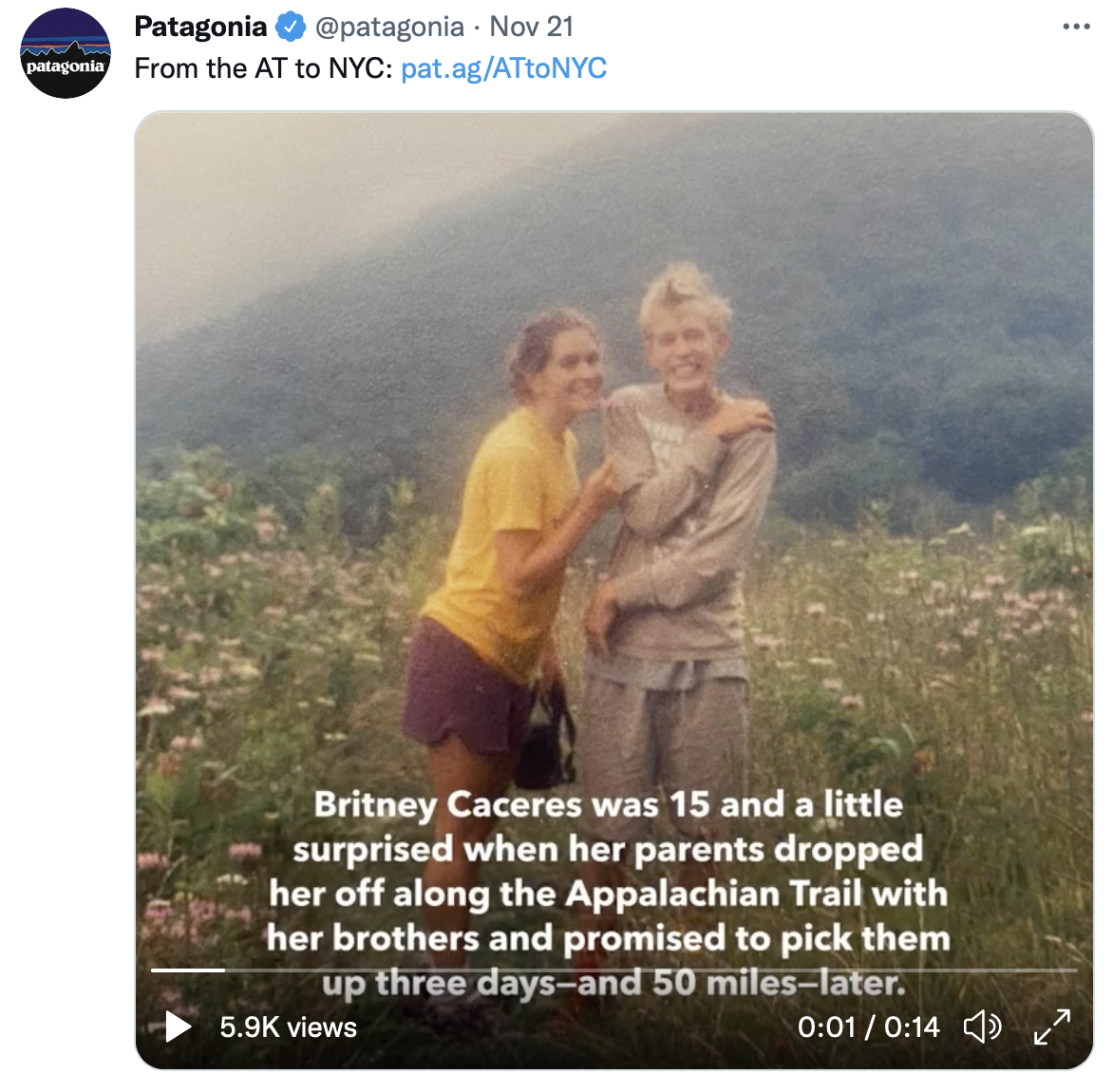
“Good and powerful storytelling whether it’s for a book, article, a website or on social, must begin with a moment of unexpected change,” says Carolyn Rush Crouse, strategy director of branding agency Red Antler.
“I learned that from the brilliant Will Storr in his book, The Science of Storytelling. He cites beautiful examples, like E.B White’s Charlotte’s Web, which begins, ‘Where is papa going with that ax.’ We are left wanting more. In any situation where you’re given the privilege of telling or sharing your story, bring people in as quickly as you can.”
6. Understand the psychology of sharing.
Have you ever asked yourself why you chose to share a certain post to your Instagram Stories or why you felt compelled to retweet someone?
Odds are, it’s because that content tapped into one of the five reasons we share, according to a study by The New York Times Customer Insight Group:
- To bring value and entertainment to others
- To define ourselves to others
- To grow and nourish our relationships
- To fulfill ourselves
- To get the word out about causes or brands
When you craft a social media post, ask yourself if the content could accomplish one or more of these. If not, rethink your strategy.
7. Humanize your brand.
Yes, you’re engaging in social media storytelling on behalf of a brand, but people are interested in stories about people and making connections with them, so keep this in mind.
“With every social media post, consider a way to humanize what you’re sharing,” says Desiree Tizon, EveryoneSocial’s senior social media manager.
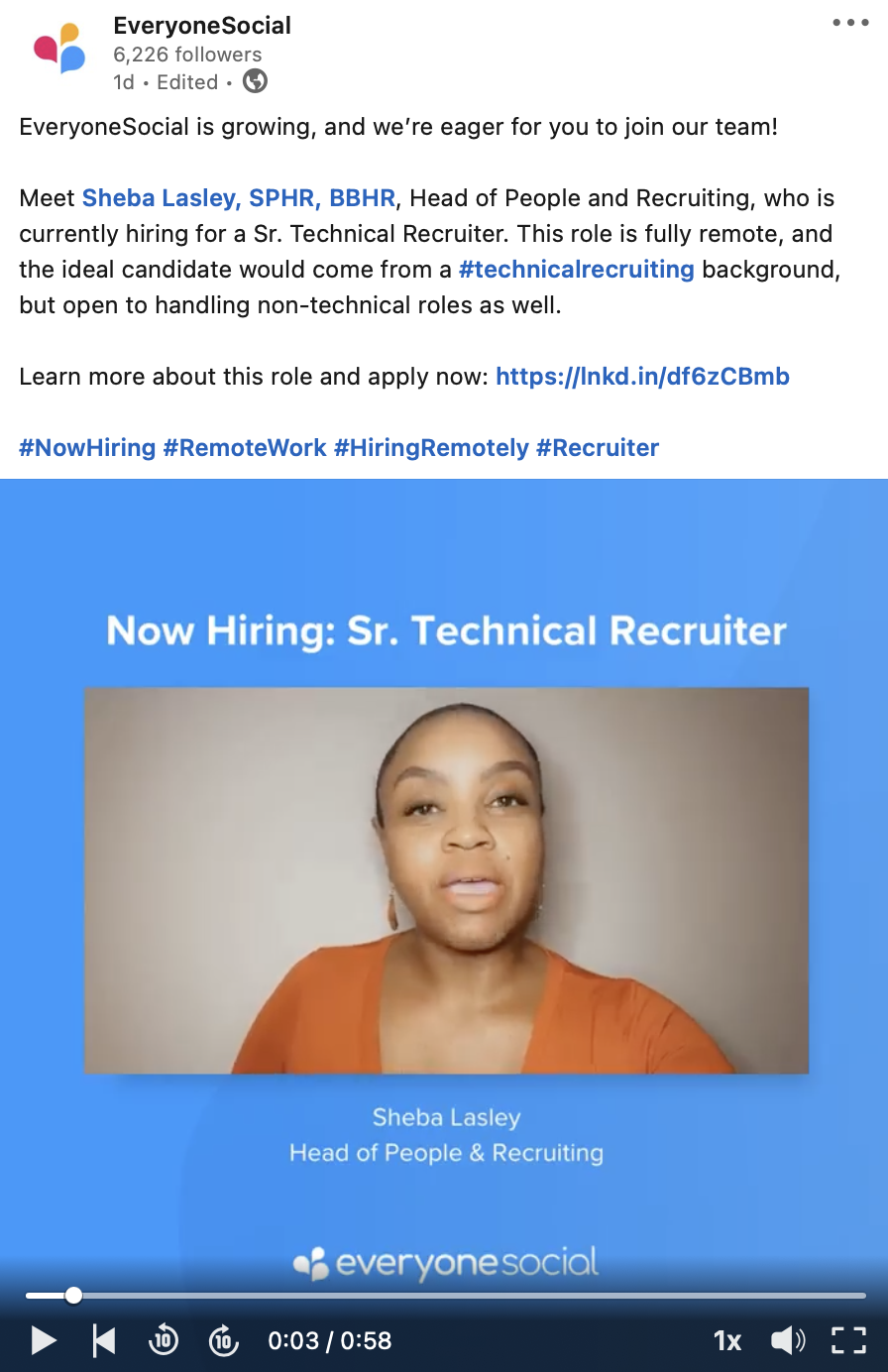
“Instead of a stock photo, do you have an image of an employee to use instead?,” she says. “Rather than sharing a link to a job post, can a hiring manager share a video of what they’re looking for in the role? Each employee at your company has a story to tell, sometimes they just need a bit of encouragement to participate.”
8. Feature customers and employees.
On that same note, it’s important to give employees and customers the opportunity to advocate for your brand. After all, they’re part of your story.
Do this by featuring customer stories, such as in the example below, highlighting employees, and even resharing content from users and employees on your social media channels.
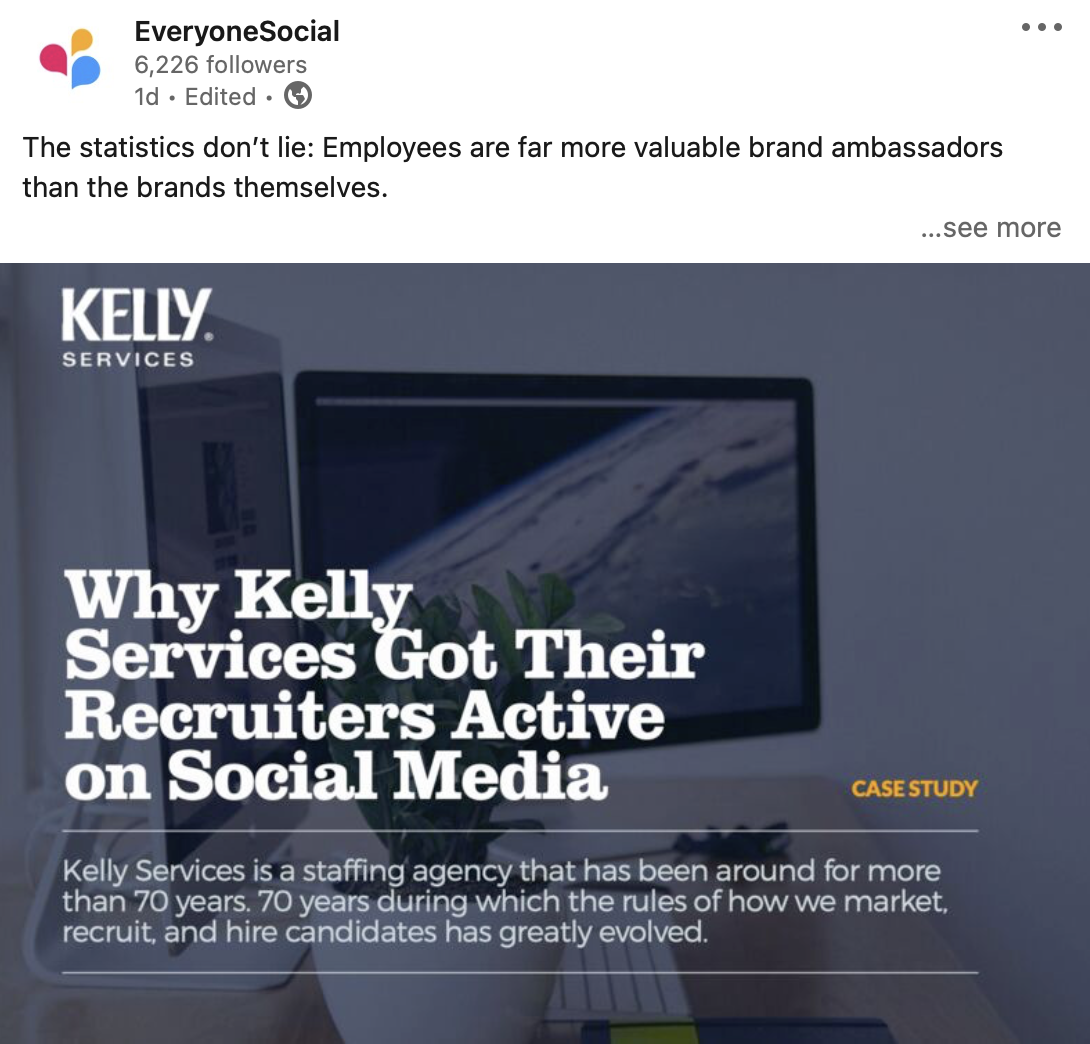
User-generated content and employee-generated content are essential to social media storytelling.
After all, 92% of consumers trust online content from friends, colleagues, and family above all other forms of brand messages. Plus, 79% of people say this kind of content highly influences their purchasing decisions.
There’s no shortage of ways to share customer stories. You can create heartwarming video content like UPS does to showcase its customers.
Or you can follow Glossier’s example and make sharing customer-created content a key part of your social media storytelling.
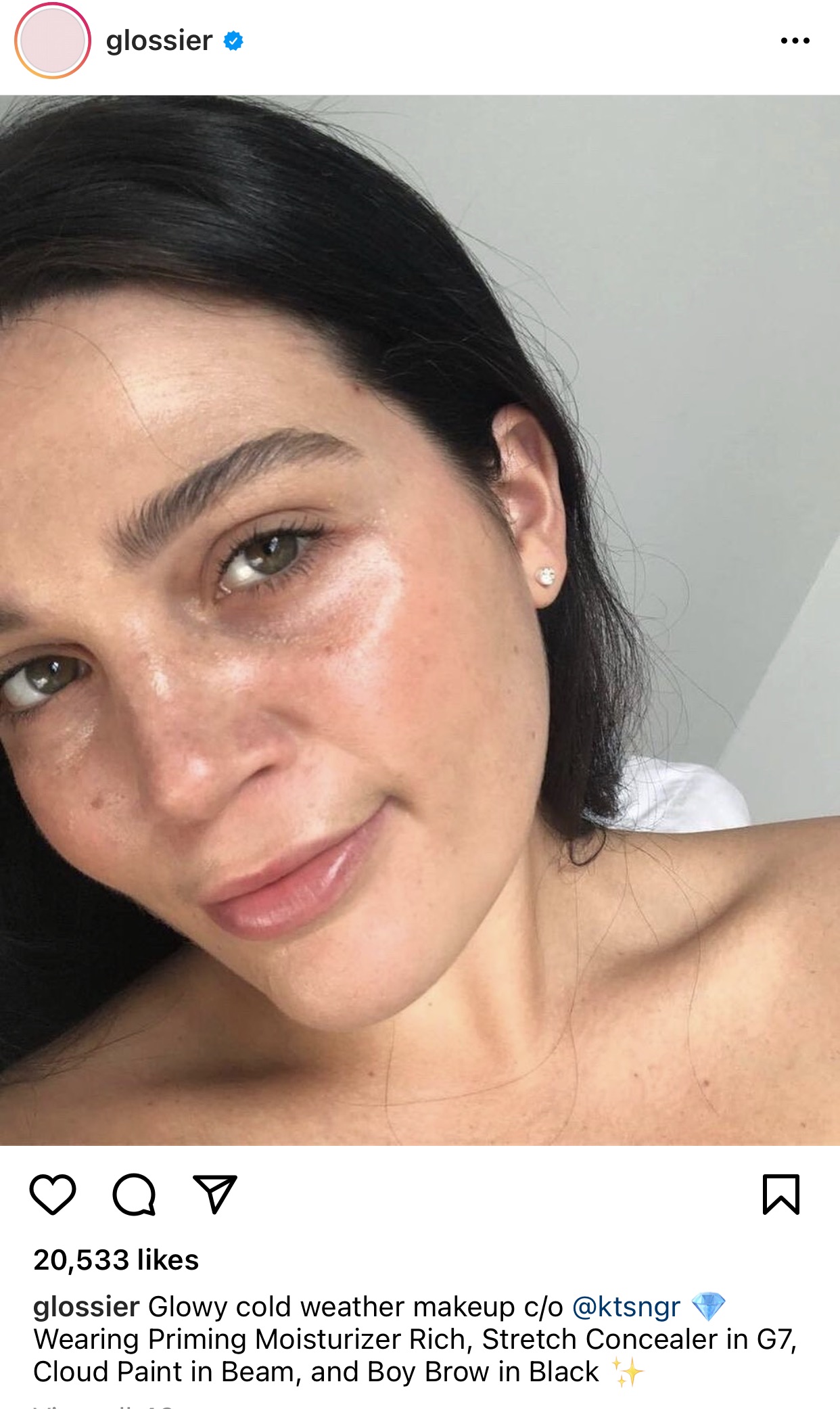
The beauty brand relies on customer-submitted imagery and aims to make “every single woman an influencer,” according to Glossier Founder Emily Weiss.
And give your audience what they want by featuring employee stories and showcasing the value your product brings to not only customers but employees themselves.
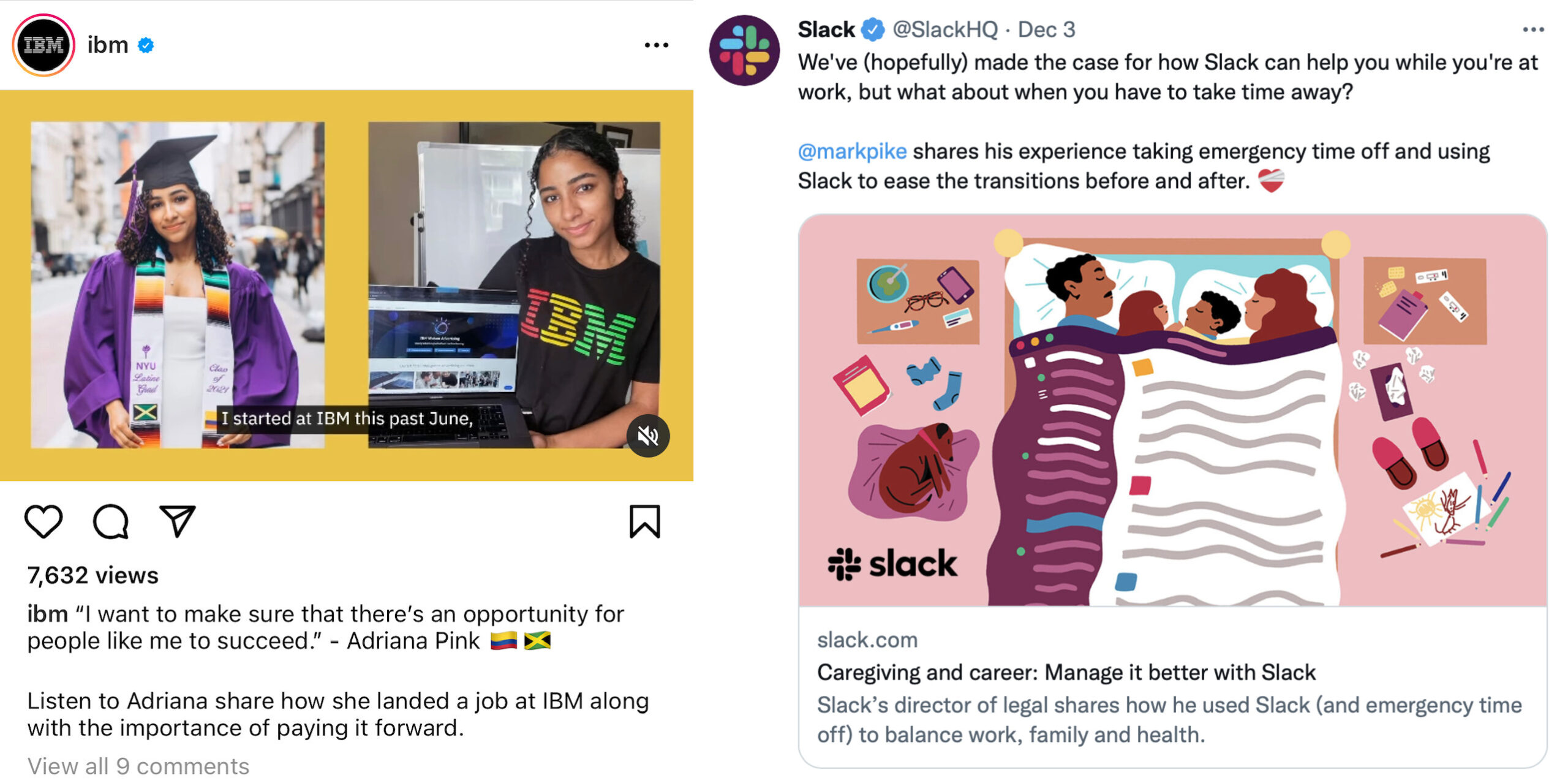
Let Employees Contribute to Social Media Storytelling
Your people should be a key part of your company’s social media storytelling.
Not only do they have unique and compelling stories of their own to share, but they also have far greater reach.
In fact, their personal social channels reach a 561% bigger audience than brand channels, and their content receives eight times more engagement.
EveryoneSocial makes it easy for employees to create and share content about your brand.
















